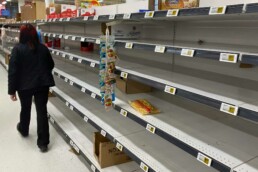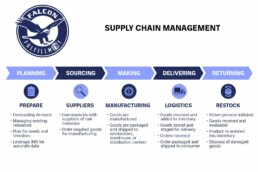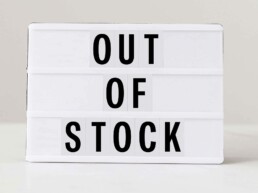Improving Supply Chain Resilience with a 3PL Partner
The supply chain is often taken for granted until it is broken. The supply chain revealed some critical areas of weakness thanks to COVID-19 and the dominoes that toppled afterward. Improving supply chain resilience became an instant focus. Mike Jackson, executive director at the Original Equipment Suppliers Association (OESA), says, “Supply chain risks spiked on a number of fronts, fueled by workforce constraints, input shortages, and liquidity issues, due to the slashing of production volumes and future forecasts.” Companies scrambled with little or no notice to meet growing customer demands and plummeting supply.
During one of the biggest e-commerce booms, the businesses that thrived deployed partnerships and processes that improved supply chain performance. Delays, disruptions, and ongoing issues in the supply chain will not be dissolving anytime soon. This article will discuss why partnering with a 3PL is critical in improving supply chain resilience.
What are the supply chain risks?

Long Lead Times
The time it takes from an order placed to an order delivered to the consumer dramatically increased in 2020. According to a report by Anvyl, the top five reasons for the long lead times were:
- Lack of containers
- COVID-related issues (shutdowns, outbreaks, curfews, sick workforce)
- Vessel space constraints
- Raw material delays
- Awaiting information from buyer (mostly payment delays)
Longer lead times cost many e-commerce customers. Even global conglomerate Amazon struggled to meet its “prime effect” two-day shipping. When a customer makes a purchase, they want it on their doorstep in hours or days. With the pandemic easing and the supply chain recovering, customer tolerance for delays is eroding.

Raw Material Shortages
Several ongoing factors are still contributing to a raw materials shortage, including geopolitical issues, continued zero COVID policy in China, and an upsurge in prices for raw goods. The Russian-Ukrainian crisis increased fuel costs and limited mobility of materials to major export partners. The dramatic knock-on effect left global and domestic manufacturing plants scrambling to source new suppliers. A few key industries have been hit the hardest, including; textiles, footwear, electronics, and agriculture.
Lack of Diversification
Diversification is crucial in improving supply chain resilience. From suppliers to consumer delivery routes, a diversified supply chain will increase the likelihood of success. The most pronounced areas are suppliers and manufacturing, transportation, and distribution.
Lack of Visibility
Do these phrases sound familiar, “Out of stock, back ordered, delayed shipment, delivery canceled?” The likelihood you have received this as a consumer is high. If you are an e-commerce business owner, the possibility you just had a moment of anxiety reading those is higher. Once the supply chain dominoes began to topple, the transparency of how goods were moving through the supply chain became uncertain and imprecise.
Customer service teams were overwhelmed with calls from frustrated consumers who just wanted to know WHEN or IF the product they purchased over ten days ago would arrive. Unfortunately, many businesses didn’t have a confident response. The limitations in supply chain visibility became evident. Companies that leveraged person-to-person communications and technology to illuminate issues within the supply chain could give consumers more details. Even though they may have had significant delays, they could communicate with customers proactively.
How to Improve Supply Chain Resilience with a 3PL Partner

Improving Long Lead Times
While a 3PL cannot make your manufacturer produce products any faster, they can assist with the long lead times by offering flexible warehousing. Even though lead times from international manufacturers might still be 6-8 months, the lead time from order to consumer can become significantly shorter. Having a scalable amount of storage based on fluctuating consumer demand allows e-commerce brands to pre-order products.
Improving Diversification
This is where a 3PL partnership can make the most significant improvement in supply chain resilience. Third-Party-Logistics providers are experts in transportation, manufacturers, and distribution. Where an individual e-commerce may have relationships with a few van lines or shipping suppliers, a 3PL has a vast network of connections across the transportation sector. A 3PL poised to improve your supply chain resilience will have relationships spanning air, ocean, and land. This is critical when one transportation supplier cannot deliver based on illness, staffing shortages, or border/port closures. A quick pivot can be managed by your 3PL partner, which will reduce delays.
Second to transportation is the manufacturing sector. A solid 3PL can make introductions across suppliers in order to diversify. E-commerce companies reliant on one manufacturer were at their mercy. 3PLs can help locate and work with suppliers to mitigate the risk of stockouts.
Lastly, ensuring multi-site distribution and warehousing is key in diversifying your supply chain. The best 3PL partners offer multiple warehouses where products are received, pick-and-packed, labeled, and shipped. During the worst of the slow-downs in the ports, there were certain products that were moving through West coast ports better than East coast ports and vice versa. It was highly beneficial to have a partner that could receive products from either coast. Furthermore, having a distribution warehouse near domestic manufacturers was a game-changer.

Improving Visibility
Communication failures, confusion, and limited insight from the supply chain became commonplace. However, 3PL teams are adept at reading insights and proactively determining when supplies would become critically low. Partnering with a solid 3PL allows for detailed reporting on inventory levels, forecasting, and even managing customer returns. From receiving to final delivery, a 3PL can provide almost real-time insight into your business. Premiere 3PL providers will also offer a personal approach with dedicated account managers you can contact directly. Having insight into when, where, and how your products are being managed equips your team with the information they need to appease frustrated consumers.
Beginner’s Guide to Third-Party Logistics (3PL)
The world of e-commerce is always changing, therefore understanding the roll of Third-Party Logistics is integral to keeping up. In light of this our beginner’s guide to third-party logistics (3PL) will delve into the essential aspects, offering insights into fulfillment services, warehousing, and much more.
Read More…
The supply chain is improving slowly. Businesses that stand to survive and thrive as disruptions continue to leverage every asset they can to improve supply chain resilience. By partnering with a solid 3PL, you can improve visibility, diversify transportation and distribution, expand manufacturing relationships, and decrease lead times. 3PL partners are logistics experts that can leverage their relationships to improve your business’s supply chain resilience.





